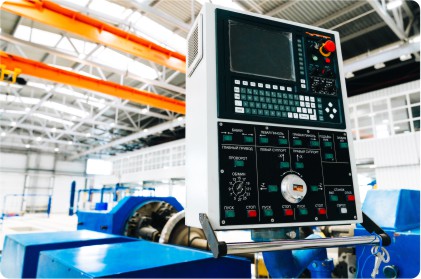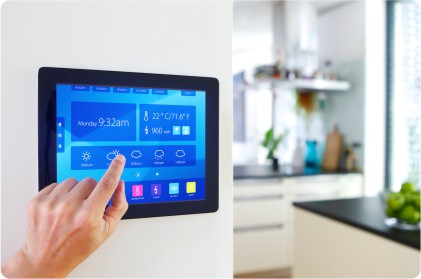BLOG
2023.01.17
HMI Drives Increased Connectivity Across Various Applications
SHARE

What is HMI?
HMI stands for human-machine interface and is regarded as a user interface (UI) or a dashboard that connects to a machine, equipment, or system. To be more specific, not to be confused with a user interface (UI) and dashboard, HMIs focus more on industrial automation applications. However, this does not mean you will not use HMI for other purposes.
Common Applications for Human Machine Interface
Here are the common applications for HMIs:
Equipment and Machinery Monitoring
The most frequently used field is factories. In a modern factory operation, the highly functional HMI is an essential part. They are required to execute and manage complex processes effectively, and functionality is far beyond your imagination. Meanwhile, AI powers the new generation of HMI to enable more functionalities for more critical and daily operations.
Building/ Home Automation
HMIs are also used in building/home automation to simplify the processes while providing homeowners with a convenient control interface. It involves connecting multiple indoor systems and controlling them from a single interface, such as lighting control, HVAC(Heating, Ventilation and Air-Conditioning) control, and access control.
Automotive Dashboards
As we are all quite familiar, a common in-car HMI may consist of a touchscreen interface for the driver or passenger to control systems like heating, air conditioning, navigation, radio, and more. As autonomous driving technology becomes more popular, it is possible to see that self-driving vehicles would have no steering wheels but giant touchscreens with digital information in the cockpit.
Next-Generation HMI
HMI technology is used in almost every industry, including manufacturing, automotive, entertainment, and medical applications. HMI in industrial applications is the primary interface for factory operators to control manufacturing processes or machines. Modern industrial HMIs range from simple handheld interfaces, replacing pushbuttons and switches, to the complex operator interface for SCADA. Hence, HMIs have become widely used and developed into more compact sizes to fit space-constrained systems, and even mobility is considered.
As we move toward the automation world, coupling edge computing and AI features, modern HMI is changing how humans interact with machines. For example, controlling machines with advanced 3D hand gesture recognition are not only an innovative interface of HMI, but also a touch-free and hygienic operation of the display.
In the following articles, Cervoz will show an in-depth analysis about the future trends and challenges of HMI and how Cervoz's solution can overcome the obstacles of HMI deployment. Stay tuned!




